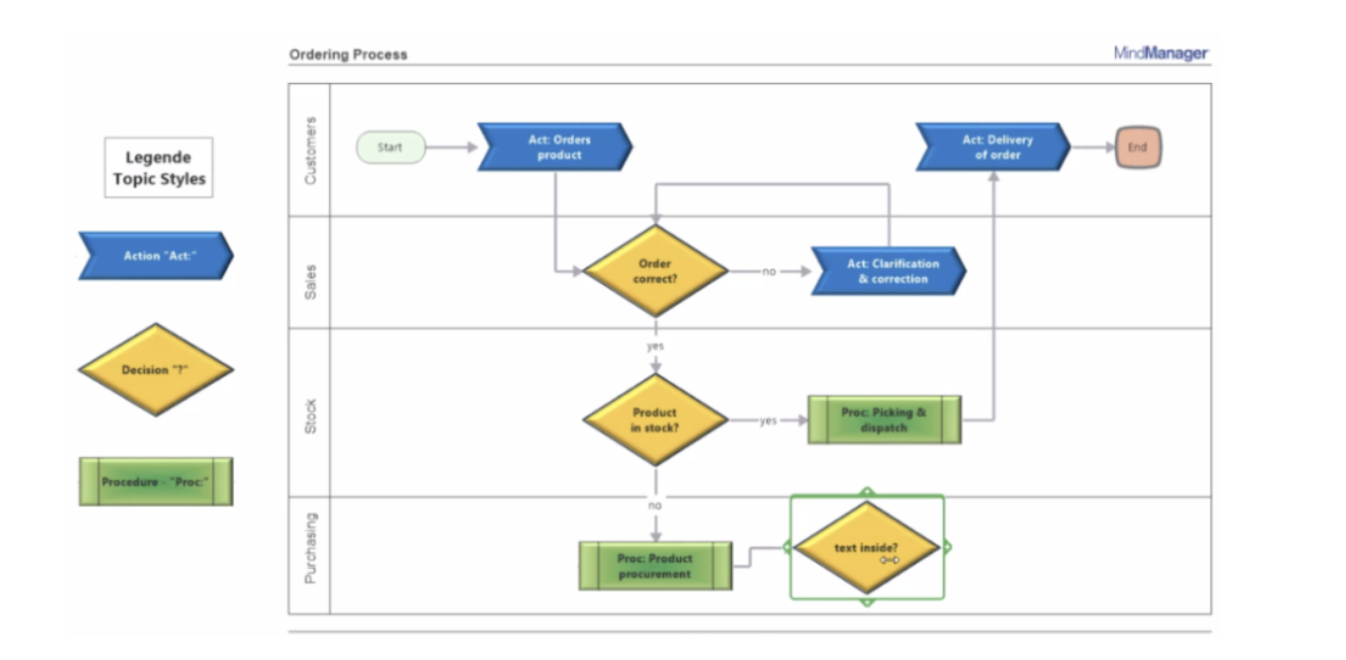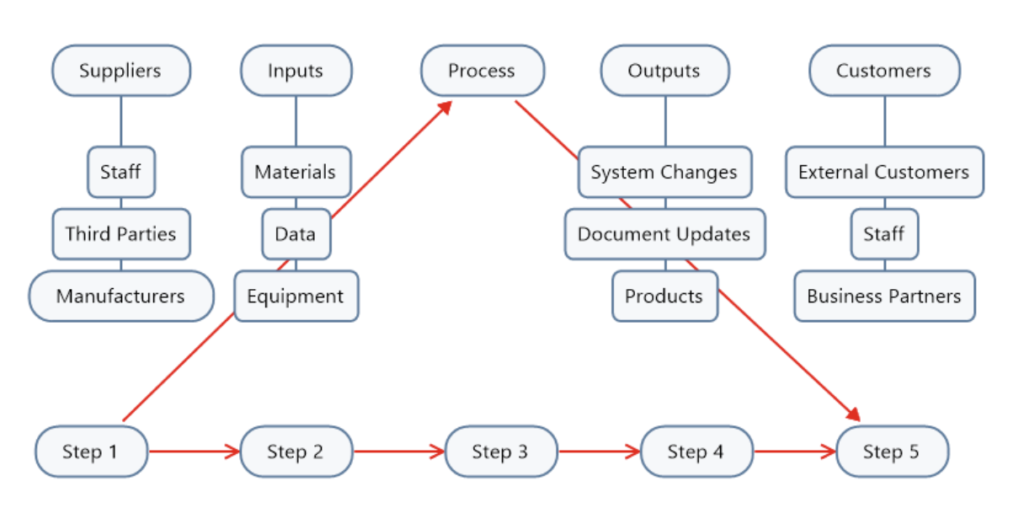Workflows are the blood vessels of an organization.
In the human body, blood vessels systematically distribute a flow of nutrient-rich blood to the various organs so that they can function properly. Similarly, company workflows sequentially organize the flow of business activities, enabling teams to function optimally and achieve their set goals.
Imagine what would happen if the immense number of blood vessels that make up the human circulatory system didn’t have a genetic blueprint to tell them how to function appropriately? The blood vessels wouldn’t know how to effectively distribute nutrients to the body’s organs, which would result in multiple system organ failure…and ultimately death.
Although this example is a tad bit morbid, it underscores why workflow documentation is so important.
Workflow documentation is the process of storing, referring to, and editing or updating the various business documents that outline company processes. Businesses use the workflow documentation process to increase successful project outcomes, eliminate waste, streamline processes, and boost their organization’s bottom line.
Without clear workflow documentation, team members would be unsure of their individual roles and responsibilities, managers wouldn’t have a resource to refer to when training new employees, and teams would be hard pressed to identify opportunities to improve their existing processes. In an ever-changing marketplace where company adaptability is key to survival, a lack of workflow documentation will ultimately result in the downfall of an organization.
Top organizations often use workflow documentation software to facilitate the workflow documentation process. These software solutions enable teams to efficiently create, edit, and review visual process documentation such as workflow diagrams. Workflow diagrams visually depict the various steps of an existing business process in sequential order, providing clarity to organizational teams.
This article will discuss the different types of workflow diagrams, the key components of a workflow, the goals of workflow documentation, and the benefits of using workflow documentation software solutions such as MindManager® to enhance the workflow documentation process.
Types of workflow diagrams
There are a wide variety of workflow diagrams that organizations can use to visualize existing company processes. Here are three commonly used workflow diagrams in the business world:
Swim lane diagrams
A swim lane diagram is a visual tool that breaks down a company workflow into activities, roles, and responsibilities. These diagrams enable team members to visualize their role more effectively within a business process. Swim lane diagrams also eliminate any confusion as to what deliverables a workflow should yield and how to complete them.

Swim lane diagram built with MindManager
SIPOC maps
A SIPOC map is a high-level flowchart that helps teams visualize and document the suppliers, inputs, functions, outputs, and customers (SIPOC) involved in a business workflow. These diagrams help teams identify which areas of a process need to be improved. Since SIPOC maps outline each element of a workflow in detail, they are also great tools to use to train new employees on existing company workflows.

Example of a SIPOC map built with MindManager.
Key components of a workflow
Within every business workflow, there are three main components: inputs, transformations, and outputs. These components work together to complete a process from start to finish.
Inputs
Inputs, sometimes referred to as triggers, are the resources such as the materials or information required to complete or initiate a specific step in a company workflow.
In a basic workflow such as a content approval workflow, an example of an input would be a writer submitting their first draft to their editor. The draft submittal triggers a response from the editor, moving the workflow forward.
Transformations
Transformations, otherwise referred to as activities, specify the actions that team members must perform for each step of a process. In other words, transformations are what occur once an input is received.
In a basic content approval workflow, the transformation would be the editor reviewing the writer’s draft. Without this transformation, the approval process would not be able to reach completion.
Outputs
Outputs, not to be confused with project outcomes, are the result of each transformation. In other words, an output is a task that has been completed. In a basic content approval workflow, the output would be the editor’s approval of the writer’s draft after completing their content review.
In more complex workflows, outputs typically become the input for the next step in an existing company workflow. So, if the editor were to identify issues with the writer’s draft during their review, they would need to send the draft back to the writer with suggested edits. Therefore, the output (the draft with editing suggestions) would become an input for the second round of the content approval workflow.
Goals of workflow documentation
When done effectively, the workflow documentation process can streamline company processes and improve business outcomes. The workflow documentation process seeks to accomplish the following goals:
Goal 1: Streamline company processes. The workflow documentation process requires teams to take another look at their company workflows to determine if they are truly optimized. By mapping out each step in an organizational workflow, businesses can gain insight as to how they can better utilize their project resources and increase team productivity levels. This aids process improvement and increases the adaptability of an organization in its entirety.
Goal 2: Eliminate waste in operational workflow. Workflow documentation enables teams to more efficiently identify waste activities in their workflows that do not add value to the outcomes of their projects. Teams can then eliminate these waste activities, enabling team members to spend less time on non-value adding tasks and more time completing tasks that add to the value of a company’s product and service offerings.
Goal 3: Improve the success of company projects. By documenting company workflows, teams will gain a better understanding of the role they play in existing company processes. This instills a sense of accountability amongst team members, making them more likely to complete project tasks to the best of their ability. A team with a high-performance level will create better quality deliverables, which increases the likelihood that a project will be successfully completed.
Goal4: Boost an organization’s bottom line.Documenting company workflows can help organizations save operational costs. Outlining the fine details of a workflow exposes poor resource utilization. Teams can then use these insights to make better use of their resources and cut project costs, which benefits an organization’s bottom line.
Benefits of using MindManager to enhance the workflow documentation process
The workflow documentation process can seem daunting at first, but with the help of visual diagramming software, documenting company workflows is a breeze. Visual diagramming solutions such as MindManager provide teams with the resources and controls they need to effectively map out each step of their company workflows.
MindManager offers pre-built SIPOC maps, swim lane diagrams, and other templates that teams can easily customize to their liking to streamline the workflow documentation process. MindManager’s co-editing feature makes documenting workflows even easier, as it enables multiple team members to collaborate on workflow diagrams simultaneously in real-time.
MindManager also enables teams to link key business documents directly to their workflow diagrams. This feature helps teams efficiently provide company stakeholders with the data they need to understand how an existing workflow contributes to overarching company goals.
Discover how workflow documentation software like MindManager can streamline processes and improve business outcomes.
